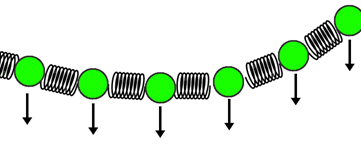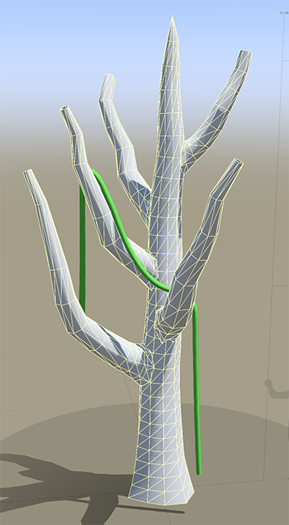Vine generator
The Vine generator creates vines that hang with gravity and interact with your model. Vines rely on a physics simulation and geometry forces to achieve a realistic look.
Use the Vine generator to create:
- Fully procedural vines that hang, crawl, twist, and wrap in a realistic way.
- Detailed vines with precise shapes and placements made manually.
- Low-poly vines that you can generate quickly for games.
Computing vines
Physics simulation
Vines are a version of the Branch generator with a physics simulation applied. The simulation runs iteratively and computes in small steps of motion, moving the vine's particles to the final resting solution.
The Droop properties on the Vine generator control the simulation.
Particles
Every control point on the accurate spine of the vine is a particle with the force of gravity pulling it down and constraints, such as the connection to other particles, placed on it.
With the forces and constrains, vines compute like a stiff spring, which makes the entire vine act like a stretchable rope.

More particles result in high-detail vines with more accurate collisions. The Segments:Accuracy property controls the number of particles on the vine.
Note
Particles can't pass through the ground, which is a solid plane.
Optimization
The physics simulation makes computing vines resource intensive, except for low-poly game vines.
To optimize the performance of vines, keep the iterations and segments as low as possible once you achieve the desired look.
Geometry forces
Geometry forces make vines wrap around, lie on top of, and otherwise interact with a model.
Unlike other generators, the Vine generator doesn't use the force behavior set on the geometry force (attract, avoid, etc.). Vines simply treat the geometry force as a collider and don't intersect it.
